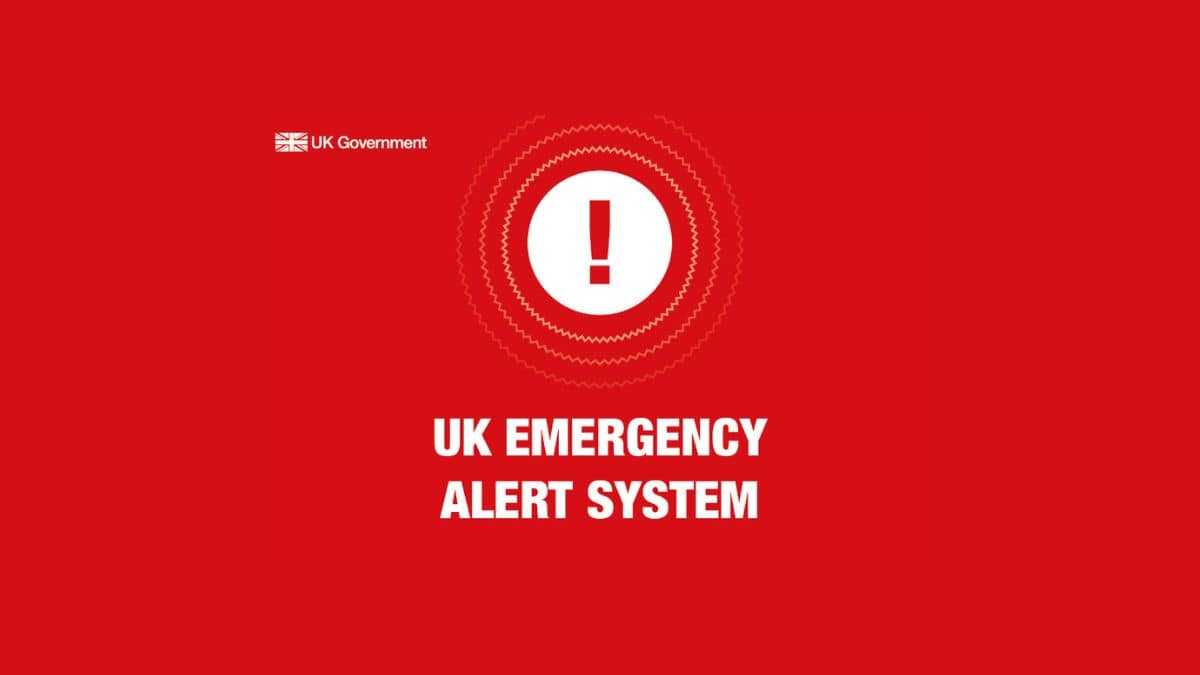
What Is International SEO?
International SEO is the process of boosting your website’s visibility on search engine results pages (SERPs) for different languages and countries.
It allows businesses to target an international audience with their content. And drive organic traffic from different geographic locations.
In this guide, we’ll share best practices for building an effective international SEO strategy.
First, let’s go over some more specific benefits of international SEO.
The Benefits of International SEO for Global Businesses
Investing in international SEO helps businesses boost their online presence and reach diverse audiences as they enter new markets.
Let’s explore these two benefits more closely:
Increased Visibility on a Global Scale
Optimizing your content for different regions helps search engines understand why your website content is relevant and valuable for users in those regions. And increases your chances of appearing in local SERPs for relevant queries.
For example, a U.S.-based fashion brand can conduct region-specific keyword research (more on that below) to identify popular search terms for their new target market in the U.K.
Say the brand identifies the keywords “uk clothing brands” and “fashion stores in london.” The U.S. company could then:
- Create localized versions of product descriptions using these keywords (including using U.K. terminology, like “trousers” instead of “pants”)
- Incorporate these region-specific keywords into content, URLs, metadata, and more
- Obtain backlinks from established U.K. brands
Implementing these tactics could help the website rank higher in U.K.-specific search results. And attract more targeted visitors who might make purchases.
Expanded Customer Base
International SEO allows you to expand your reach and put your brand in front of new audiences worldwide.
If your competitors aren’t already doing the same, you’ll gain a competitive advantage in every new market you enter where they aren’t present.
You can quickly identify whether a top competitor is targeting that same market through SEO by entering their domain into Keyword Overview and setting the database to your new target market.
On the “Positions” report, you’ll be able to see which keywords they’re ranking for in that country.

The further you can expand your reach and the more relevant searchers you can appear in front of, the more people you have a chance to convert into paying customers.
How to Create an Effective International SEO Strategy
Your international expansion requires a strategic approach so you can effectively reach and engage global audiences.
Let’s break down the steps you need to take to develop an international SEO strategy:
1. Conduct Thorough Market Research for Different Regions
To understand your new audience’s search behaviors and adapt your SEO strategies accordingly, you need to conduct thorough market research for that region. And competitive landscape research to discover how your rivals are approaching SEO in a particular market.
You can use Semrush’s Market Explorer to find your competitors in a specific market, learn about the audience, discover keyword opportunities, and more.
Here’s what you need to do.
Open the tool and select the “Find Competitors” tab.

Enter the desired location and your domain. Then, click on “Research a market.”

You’ll see a comprehensive dashboard where you can learn everything about your target market.
In the “Overview” tab, you can see the key players, top and trending keywords, market geo distribution, market traffic, and more. This data should help create a high-level picture of your new playing field and who you’re competing with.
Navigate to the “Audience” tab to learn more about the target audience’s demographics. You’ll find data about their age, socioeconomics, interests, social media usage, the domains they visit, and more.

2. Identify Target Keywords for International Optimization
Now, it’s time to discover the keywords your new audience uses to find information on topics that are relevant to your businesses.
Your keyword research should consider language variations, cultural nuances, and specific search behaviors in global markets.
Analyzing your competitors’ keywords can reveal valuable business opportunities and uncover queries that are driving traffic and conversions for your competition.
You can get started by using the Keyword Gap tool. It’ll help you compare your current rankings against the competitors you’ve found in step one for the new market you’re focusing on.
Enter your domain and add up to three competitors you’ve identified. Then, click “Compare.”

In the dashboard on the next screen, you can see top opportunities for keywords you either aren’t ranking for at all (“Missing”) or ones where you rank lower than all your competitors (“Weak”).

Scroll down, and you’ll see a comprehensive table with details for:
- Keywords you outrank all your competitors for
- Keywords you’re not ranking for
- Keywords you rank for but not as well as your competitors
And more.

You can also use filters to narrow down the keyword list based on different criteria like average monthly search volume, Keyword Difficulty (a measure of how difficult it is to rank in the top 10 for a given keyword), and more.
Once you gather keyword ideas from this table, you can run these terms through Semrush’s Keyword Magic Tool to get even more relevant terms to target.
For example, the U.S. company looking to expand to the U.K. could enter the broad keyword “uk clothing brands” to discover more related terms that may be easier to rank for. Or that can help reach a more specific audience—like one looking for sustainable clothing brands.
Enter your desired keyword into the search field in the tool, choose the location, and click “Search.”

You’ll be taken to a detailed dashboard with a comprehensive keyword list that has information about them.
You can use different filters to narrow down your search. Try filtering by “Questions” to find search terms that are questions. Or choose “Related” to find variations you might not otherwise know about.

You can also discover more niche keywords you can target by using the suggested groups and subgroups on the left.

And make sure to keep region-specific language in mind as you’re conducting keyword research. To make sure you align with your new audience’s expectations.
So, if you sell glasses and are expanding to Mexico, you would want to use the word “lentes” (which is used in Mexico) rather than “gafas” (which is used in Spain).
The keyword search volume for similar keywords using these terms makes it clear just how much region-specific keywords matter. “Lentes de sol” is searched much more often than “gafas de sol” in Mexico.

Understand Local Search Engines and Search Behavior
Once you’ve done keyword research, analyze search behavior and use of different search engines in your target countries.
For instance, a U.S. company expanding to Mexico and Argentina may want to understand how local users search for terms related to their products and services.
Do they use English, Spanish, or both?
And in some countries, Google isn’t the only search engine in use. For example, around 14% of the search engine market share in Japan belongs to Yahoo.
Users in China tend to prefer Baidu. And Yandex is the most popular search engine in Russia.

Why is this important?
Say you’re expanding to Russia and want to rank on Yandex. You should consider the fact that this search engine may prioritize different factors to determine its rankings.
For example, Yandex relies a lot on user behavior signals to evaluate site quality. It also recommends selecting the correct region in Yandex’s Webmaster Tools settings to ensure that Yandex displays the content to the relevant user base in the right geo-location.
3. Adapt Your Content for Cultural and Regional Preferences
Your region-specific content should have in mind the audience’s unique values, communication styles, and cultural norms. That means localizing your content rather than just translating it.
Translation involves converting content from one language to another while keeping its original meaning. It focuses on accuracy.
Content localization considers regional, cultural, and contextual factors and aims to adapt to the preferences and expectations of a specific audience.
Localizing your content instead of merely translating it can contribute to higher user engagement because the content is more likely to resonate with the audience. It can also help build a positive brand reputation in a new market.
So, consider incorporating links to sites that are recognized as authoritative in your new market. And using examples that speak to their traditions.
You should also incorporate visuals that are familiar and appealing to your target market. By using images, colors, and symbols that are culturally relevant and aligned with their beliefs or customs.
Other considerations may include:
- Sizing and fit, which may vary by country or continent
- Different date formats (MM-DD-YYYY in the US vs. DD-MM-YYYY in Europe)
- Seasonal differences between locations around the world (e.g., summer in the U.S. is winter in Australia)
- Currency and pricing
- Legal and regulatory compliance steps (for example, the General Data Privacy Regulation in the EU)
Further reading: 7 Ways to Fail at International SEO
4. Build Relevant Links
Gaining backlinks from websites that are reputable in your new market can help your website rank faster. And drive traffic to your regional pages.
To attract backlinks from locally relevant sites, your content needs to resonate with local audiences. Not just any piece of content will work if the imagery and statistics included aren’t relevant to the local audience.
For example, if you have an infographic on hiring stats in the U.S., translating it to Spanish won’t provide value to your audience in Spain. Including local hiring stats and region-specific visuals ensures the content has a better shot at getting backlinks.
Format also matters.
Here are a few content formats that typically get linked to:
- In-depth guides that demonstrate your expertise
- Original data and research
- Guides and tutorials
- Infographics and other data visualizations
- Case studies and client success stories
- Interactive content like quizzes and calculators
You can find good backlink prospects and conduct outreach using the Link Building Tool.
Open the tool and click “+ Create a project.”

Enter your domain and click “Create project.”

Now, add your local keywords and set the country to your new target market.
Then, add the competitors you identified earlier and click “Start Link Building.”

When the project is ready, go to the “Prospects” tab to see a list of websites you can reach out to for links to your content.

You can add the most promising prospects to your “In progress” list by clicking the button to the left.
From here, you can create and send outreach messages.

Further reading: How to Get Backlinks: 10 Strategies That Work
Technical Considerations for International SEO
Addressing technical SEO elements can ensure that search engines properly crawl and index your international content. Which could improve your website’s rankings and visibility in your target region.
Implement Region-Specific URLs
A localized URL helps users recognize that your content is relevant to them. And also helps search engines understand who your content is intended for.
Google recommends implementing one of the following practices:
- Use a country-specific domain: A country-specific domain helps easily separate websites and is useful when server location doesn’t matter. But it can be expensive and limits your targeting to a single country. Example: www.yourwebsite.es.
- Use a subdomain with a generic top-level domain (gTLD): A subdomain with gTLD is easy to set up and is suitable for websites hosted on servers in multiple locations. A downside is that it’s not as easy to recognize whether the domain refers to the country or language. Example: www.es.yourwebsite.com.
- Use a subdirectory with gTLD: Subdirectories are easy to set up and require little maintenance since you’re using the same host. But it’s harder to separate sites and the location might not always be clear from the URL. Example: www.yourwebsite.com/es/.
Implement Hreflang Tags
Hreflang tags are HTML attributes you can use to inform a search engine about the language and regional targeting of webpages on a multi-language or multi-regional website.
They’re a key element of international SEO.
Why?
Because, hreflang tags signal to search engines which page is the most relevant version of a based on the users’ language and location.
Essentially, hreflang tags help ensure that your users in a new market will be served the correct language version of a page in search results (like in the image below). And are more reliable than other tactics.

And here’s what an hreflang tag would look like for a company based in the U.K. that wants to serve content in Spanish to its new audience located in Spain.
<link rel="alternate" href="https://www.example.com/page" hreflang="en" />
<link rel="alternate" href="https://es.example.com/page" hreflang="es" />
Here’s what each component means:
- link rel=”alternate” indicates an alternative version of the webpage
- href=”https://es.example.com/page” includes the alternate page in the target language or region
- hreflang=”es” specifies the language and sometimes a region (for instance, for English in the U.S. be hreflang=”en-us”)
Note that the code lists all versions. Because Google recommends self-referencing hreflang.
Hreflang tags are critical in ensuring a great user experience and showing search engines (especially Google) that your content is relevant for specific regions. So, they can help your SEO efforts.
For more information on how to implement these correctly, see our in-depth guide on using hreflang tags.
Handle Duplicate Content and Canonicalization Issues
Duplicate content refers to identical or nearly identical content appearing in multiple places on your website. Which can happen if you’re leveraging international SEO.
Duplicate content can lead to keyword cannibalization. That means your pages may harm each other’s chances of ranking well.
Using canonical tags can help prevent or alleviate content duplication issues.
These tags are HTML attributes used to indicate the primary (or canonical) version of a webpage. Their main role is to tell Google which is the primary version of a webpage.
Here’s what a canonical tag looks like:
<link rel="canonical"href="https://yourwebsite.com/uk/product-category/product-name"/>
Note that you should be careful when using both hreflang and canonical tags at the same time. Because they can send conflicting messages to search engines. And lead to them ignoring both the hreflang attribute and the canonical tag.
To avoid this problem when using hreflang attributes, Google recommends specifying a canonical page in the same language. Or whichever language is the best option.
Optimize Website Speed and Performance
Page speed is crucial for providing a positive user experience on your website. If your website takes too long to load, your bounce rates may increase. And your rankings may drop.
You can check the speed of individual pages using Google’s PageSpeed Insights tool.
The resulting report will give you insight into any issues your users are experiencing:

To optimize your website speed for users all around the world, you can:
- Use a Content Delivery Network (CDN) to distribute content across multiple servers worldwide
- Compress images and files to reduce page size
- Ensure your website is mobile-friendly
- Implement a suitable caching policy to store static HTML versions of your website’s pages to serve to users
Regularly Audit Your Website to Uncover Any Technical SEO Issues
Semrush’s Site Audit tool can help you uncover technical SEO issues through crawling every page on your website. An audit will uncover any missing H1 headings, incorrect pages in sitemap, duplicate title tags, and errors in hreflang tag implementation.
Open the tool and enter your website domain. Then, click “Start Audit.”

Choose the crawl scope, limit of checked pages, and crawl source. Then, select “Start Site Audit.”

The “Overview” dashboard will show different metrics describing your website’s health.

Under the “Errors” tab, you’ll find potential hreflang implementation issues.

Click “Why and how to fix it” to learn more about each issue and how to improve it.
Measure and Analyze International SEO Performance
Measuring and analyzing your international SEO performance is another crucial step to success. Because it helps you understand which tactics are working. And which ones aren’t.
Before you dive into the data, determine how you’re going to measure success. What are your primary goals for each market you’re trying to reach?
Then, make sure you have the right tools. Like Google Analytics 4 (GA4).
GA4 helps you monitor and analyze user behavior and identify opportunities for optimization. You can find all relevant reports under “Reports” in the left sidebar.

Depending on what information you need, you can access high-level overviews of your website analytics and more in-depth reports.
The following reports are particularly useful for tracking international SEO performance:
- Traffic acquisition report: Access the report by navigating to “Life cycle” in the “Reports” tab, then clicking on “Acquisition” and selecting “Traffic acquisition.” You can see what portion of your overall site traffic comes in organically, how much time these users spend on your website, and more.

- Landing page report: Access the report from the “Reports” tab by clicking on “Engagement,” then “Landing page.” In this report, you can learn which pages typically serve as visitors’ entry points into your site.

You can also use our Position Tracking tool to add relevant keywords for each region and monitor their rankings.
Open the tool, enter your domain, and click on “Set up tracking.”

Next, choose your preferred search engine, device type, and location.
Then, click “Continue To Keywords.”

Now, add your target keywords. If you already have a file with keywords, you can import them instead of entering them manually.

Then, click the “Start Tracking” button.

When you complete these steps, you’ll see all the keywords you’ve added in the “Overview” dashboard.

From there, you can evaluate your rankings and how they’ve changed. To learn whether your international SEO efforts are paying off.
Note: You can receive ranking updates directly in your inbox instead of checking the positions manually. And you can even set custom alerts if there’s something specific you want to know about right away.
Unleash Your Global Potential with International SEO
Expanding to new markets can boost your sales. But you first need to gain visibility in those new markets by implementing international SEO best practices and regularly monitoring your efforts.
Ready to go global?
Try Semrush for free to test out tools that can help you with identifying region-specific keywords, conducting market research, and more.







